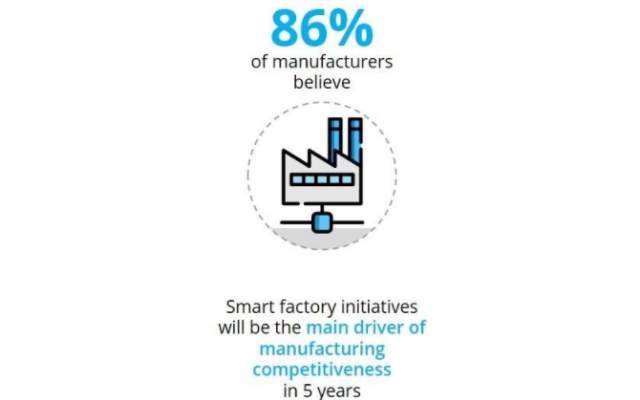Authors: Heather Ashton, Manufacturing Research Leader, Energy, Resources & Industrials, Deloitte Services, LP, and Kristin Graybill, VP, Communications, Marketing, & Sales, MAPI
Manufacturing executives understand the business value of smart factories, according to recent research from the Manufacturers Alliance for Productivity and Innovation (MAPI) and Deloitte. Indeed, 86% believe that smart factory initiatives will be the main driver of manufacturing competitiveness in the next five years. But how do we get there, and who will lead us?
In short, two major components typically contribute to success with smart factory initiatives: technology and talent.
The 2019 Deloitte and MAPI smart factory study offers detailed insights related to the foundational and advanced technologies that define many of today’s transformational smart factory initiatives. Cloud, big data and analytics, and IoT sensors are among the foundational technologies, while advanced technologies like artificial intelligence (AI), machine learning, robotics, 3D printing, and blockchain can elevate smart factory use cases to become game-changers.
What’s equally important to explore, though, are the talent-related aspects of smart factory initiatives. The study found that it is generally considered imperative to have the right people as part of these initiatives, from those who sit on the steering committee to the employees on the front lines in the factories using the digital tools. And often of critical importance is the need for a visionary leader to champion the effort.
But identifying, retaining, and upskilling talent remains a core challenge facing many manufacturers. It is estimated that a manufacturing skills gap may result in as many as 2.4 million U.S. manufacturing jobs going unfilled between 2018 and 2028, at a potential economic impact of $2.5 trillion to the U.S. economy. Much of the gap is related to a widening chasm created by a retiring manufacturing workforce and fewer potential job candidates to fill openings, due to demographic shifts and the allure of other industries like technology. In fact, 45% of manufacturers surveyed in the smart factory study believe they lack enough people with the skills and competencies needed to implement an effective smart factory strategy.
The manufacturing sector should find new ways to attract a dwindling pool of workers. Could the smart factory actually be one of the keys to replenishing the manufacturing workforce, one that has the digital skills needed for the future of the industry? An interesting finding of the study is the belief by respondents that the rise of digital capabilities in the factory can act as a magnet to attract new talent. In fact, 77% of respondents believe that smart factory initiatives will attract new talent to the manufacturing industry as a vibrant viable career option.
Another recent study from the MAPI Foundation noted that the advent of the digital workforce in manufacturing is expected to create new jobs – including new roles central to digital design and manufacturing. These opportunities are not just for STEM graduates. In addition to roles like AI strategist or supervising AI implementation, these new technologies and systems would likely require fusion skills that complement human and machine talents in new ways. In fact, some Silicon Valley companies are already on the hunt for more liberal arts and humanities graduates. They recognize that diverse thinking, and connections between design, science, and art can potentially deliver the next industrial renaissance.
So where is the best place to start attracting new talent, and reskilling and retaining the solid talent that exists within your organization? On the former, ensure that prospective employees are aware of the ways your organization is using “smart” technologies. For reskilling existing talent, here are several suggestions to consider, based on the smart factory study:
- Develop training courses, including a mix of in-house and virtual training, to provide existing talent with the digital skills they need to perform the new tasks that smart factory initiatives create.
- Create a “Devwork” program, one that incorporates development assignments that can expand employee skills on-the-job.
- Consider ways to partner with universities and/or join a technology consortium that could help keep your organization abreast of the latest disruptive technologies and provide additional opportunities for learning.
- Curate training available externally through open-source resources.
It will take time to solve the challenge of attracting, training, and retaining talent. With digital training programs and awareness-building campaigns that convey manufacturing’s increasingly “smart” setting, we can move the pendulum toward a brighter future. Smart factory initiatives could be both the catalyst and the reward.





Comments